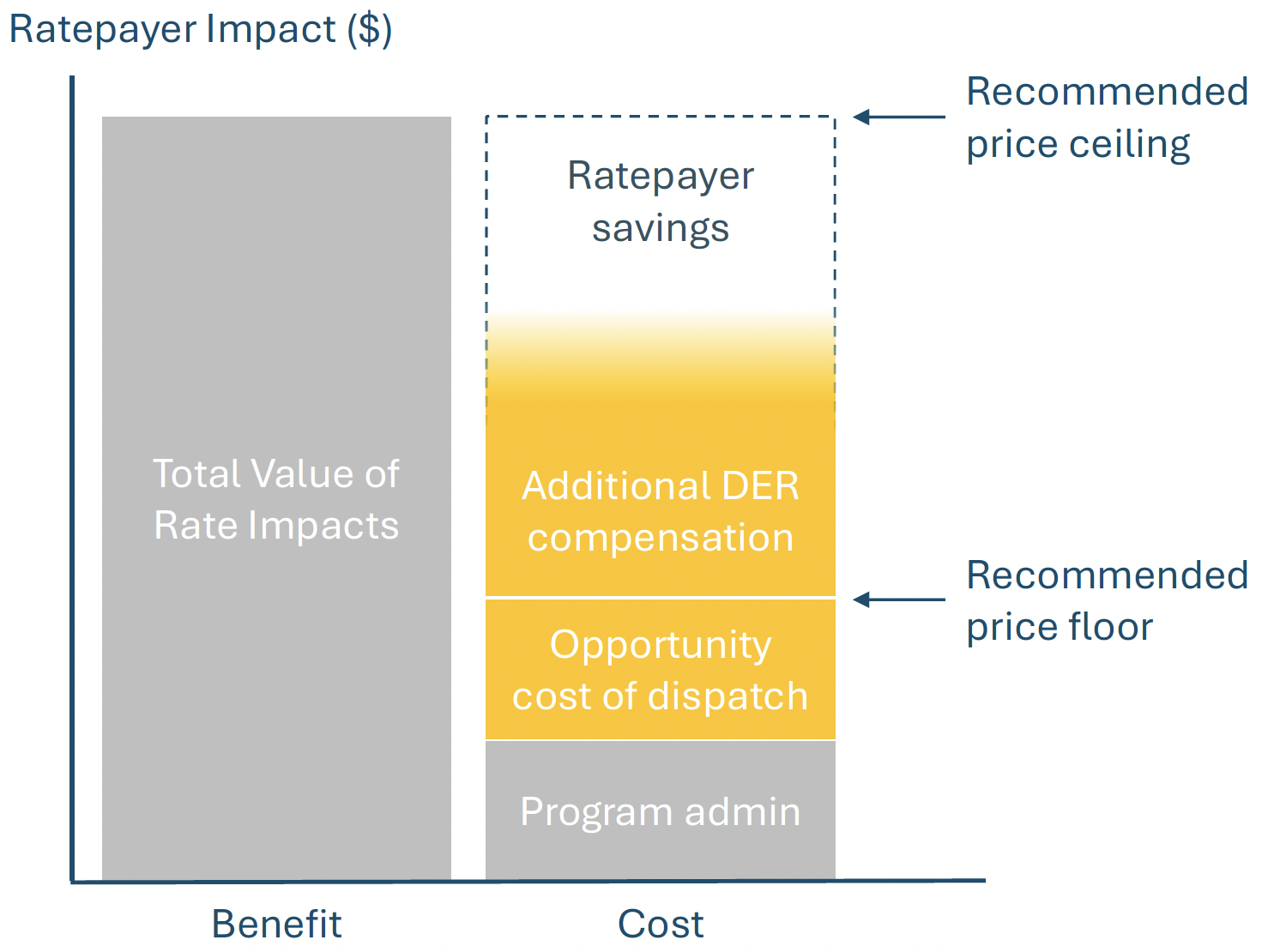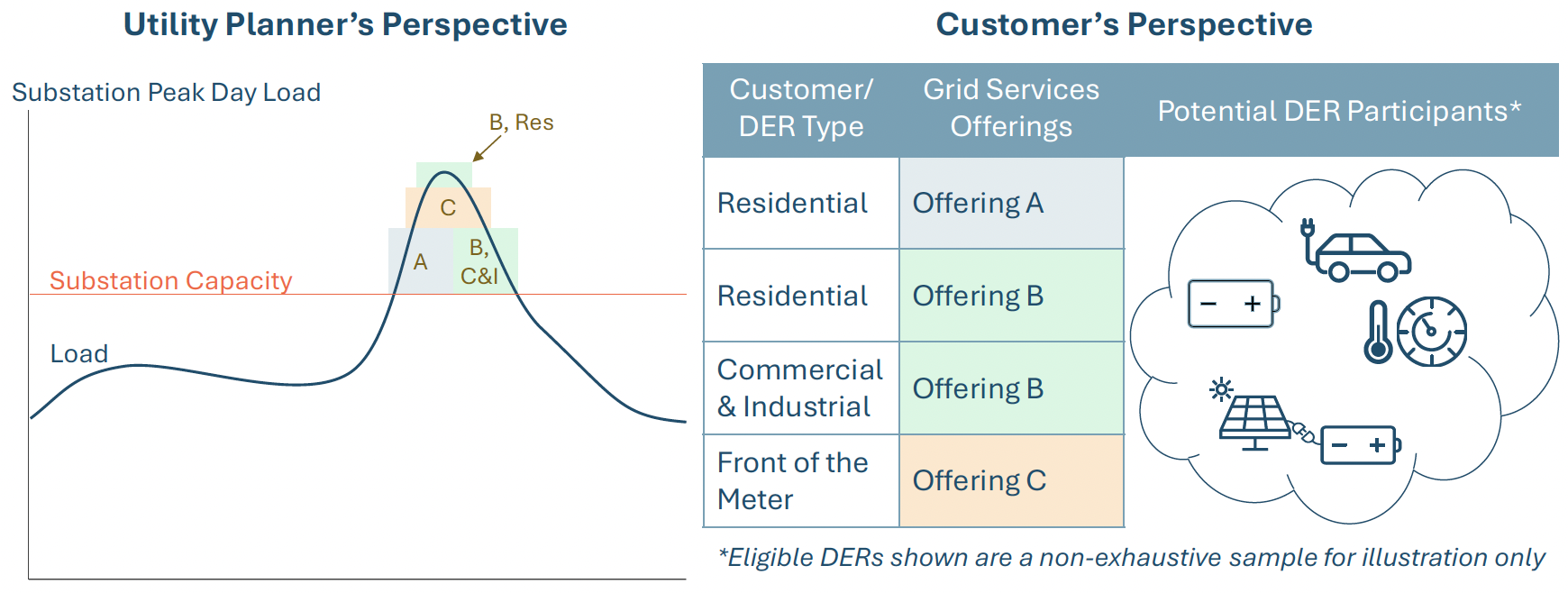
Massachusetts is moving quickly to electrify buildings and vehicles as a part of the clean energy transition, while also seeking to keep electric bills in check. Distribution system costs play a key part in this, as new and growing demands on electric infrastructure can lead to a need for expensive upgrades. Long lead times for infrastructure buildout can also slow interconnection timelines for new loads. In many instances, stress on just a single feeder, transformer, or substation during a small number of critical hours drives these costs or delays, making the issue a very localized one, albeit with far-reaching impacts for ratepayers. To explore ways in which Massachusetts can make use of innovative and similarly distributed solutions to address these local grid needs, E3 completed the Grid Services Study, sponsored by the Massachusetts Clean Energy Center (MassCEC) and in partnership with the Department of Energy Resources, the Attorney General’s Office, the electric distribution companies (EDCs), and RMI. The culmination of this work is a Grid Services Roadmap that lays out a blueprint for using flexible distributed energy resources to relieve those local constraints and reduce costs for customers throughout the Commonwealth.
Grid Services moves beyond traditional use of non-wires alternatives that rely on one-off procurements, or broad strokes Distributed Energy Resource (DER) programs that assign generic values to resources regardless of where they connect to the grid. It sets the foundation for more consistent and robust offerings to enroll and dispatch existing distributed energy resources in the right locations and at the right times to solve targeted problems. These resources include residential and commercial load flexibility, battery storage, managed electric vehicle charging, and front-of-meter resources that can be steered to the specific part of the system where relief is needed. The Roadmap ties in with the EDC’s Electric Sector Modernization Plans and will inform the roll-out of targeted distribution Grid Services incentive offerings over the next 5 years and beyond.
A central theme in the study is that distribution value varies significantly by place and time. Paying one statewide price for “flexibility” risks underpaying where the grid is under strain and overpaying where it is not. E3 developed a ratepayer-focused valuation framework that ties compensation to the cost and timing of the local need. This valuation is focused on two primary use cases for flexible grid services that appear in utility plans:
- Investment deferral: by reducing electricity demand during peak times in specific locations, DERs can push back the need for costly upgrades to feeders, transformers, or substations, providing potential savings to ratepayers and giving utilities critical time to better understand how needs will develop over time.
- Bridge-to-wires: when electricity demand is growing faster than new infrastructure can be planned, permitted, and built, DERs can temporarily cover the gap, allowing new load to connect sooner without reliability concerns or the need for more economically and environmentally costly interim solutions.
This valuation can be used to set a soft price ceiling for the total cost of Grid Services offerings to ensure net savings for customers. The compensation framework also recommends an effective price floor for incentives that is determined by the opportunity cost of dispatching DERs and will allow offerings to prompt dependable response from participants. An important recommendation of the study is that the state work to minimize this opportunity cost by aligning incentive signals across DER programs and rates.

Success of Grid Services offerings depends on clear dispatch windows, simple enrollment, and dependable telemetry so operators can call for relief with confidence. It also depends on well-designed equity measures. E3 engaged with the public through a series of stakeholder workshops and environmental justice focus groups to gather input on the specific details of offerings that would most appeal to potential participants and to understand how Grid Services eligibility, outreach, and objectives can best align with community priorities.
To meet the varied needs of different participant types and ensure reliable response from DERs, utility planners should employ a combination of multiple Grid Services offerings with different and complementary components. These offerings can be stacked together to meet local needs and should rely on a single valuation framework so that compensation depends on the benefits to ratepayers from services performed and not the means of generating those benefits. Early on, the focus should be on exploring a wide range of offerings, measuring what works, and iterating, while keeping the offerings simple for participants to understand. Over time, as advanced metering infrastructure, distributed energy resource management systems, and customer familiarity with flexibility offerings become widespread, the offerings can expand to address more precise and nuanced challenges.

In the next five years, the Commonwealth can move from concept to execution. That means identifying candidate locations from utility planning data, publishing transparent values for those locations and hours, enrolling resources that already exist on the system, and confirming performance through robust evaluation. The long-term goal is a durable Grid Services platform that ties compensation directly to where and when needs occur, coordinates with other rates and programs, lowers the cost of meeting local distribution challenges, and delivers tangible benefits in environmental justice communities.
Download the full Roadmap here >
For further information on E3’s work on distribution system planning and grid services, please contact andrew@ethree.com.


